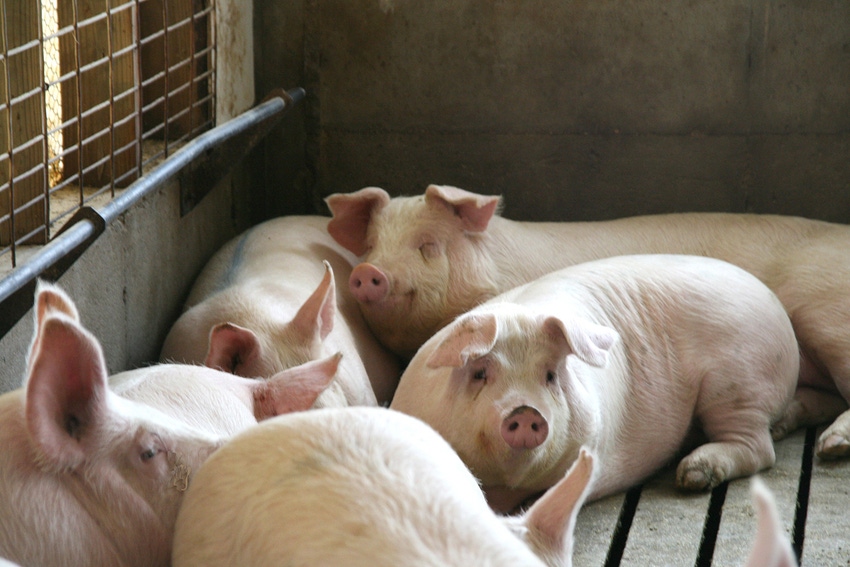How can you tell when your pigs want more?
More nutritional input and secondary requirements may need to become a significant part of the equation for meeting gilt needs.

Matt Culbertson remembers when the word “hangry” got added to the Oxford English Dictionary earlier this year. He couldn’t think of a better word to describe his two daughters growing up when their irritable hunger came on.
It’s also a new word the director of Global Product Development and Technical Services for PIC says applies to pig production today.
“I do believe that we have to continue to look for signs like that and other dynamics to help us understand where the constraints are in our systems,” Culbertson says. “The majority of abnormal response, be it production level responses or behavioral responses, I think are at least somewhat triggered by an environmental irritant and in some cases I believe that nutrition and feed, or the inability to get the right amount or the right nutrients into the pigs definitely leads to some of those abnormal responses.”
Culbertson, who recently spoke about the industry’s genetic improvement at the DSM Pork NEXUS meeting, says with all the biological changes in pork production today, we need to further examine the inherent needs of the growing gilt.
Developing gilts
“We have a developing gilt today that’s been selected and developed to contribute not only her genetic potential for high levels of prolificacy, but also to contribute her genetic potential for lean gain efficiency to her progeny. We are asking her to grow and continue to perform in a cost-effective and sustainable manner through the GDU facility, and then magically snap fingers and become a breeding female and stay in the herd for a long time and be productive with a high level of lifetime performance,” Culbertson says. “That’s a pretty big ask.”
He would argue today that gilt development units are one of the more overlooked stages in a lot of our production systems. While the industry focuses on specific changes in phase feeding, the majority of GDUs have a reduced capacity to even feed the same number of diets that are fed at the commercial level. Instead, Culbertson says more nutritional input and secondary requirements may need to become a significant part of the equation for meeting gilt needs.
Breeding herd
Over the last 20 years, the average sow output has increased dramatically, no matter how you measure it. In some areas, we are seeing a 25% increase in total output. For example, Culbertson says a sow today, with the number of pigs they are producing and on a 23- to 25-day lactation cycle, is producing as much milk at peak lactation as a Holstein on a weight basis.
“The lactational demand on the females today — to raise their pigs, to rebreed efficiently, to stay in the herd — I think is a very important aspect of our underlying nutritional program and something that we need to continue to evaluate how we monitor or manage these animals once they go into the breeding female population,” Culbertson says.
The growing pig
According to Culbertson, the industry will continue to see an acceleration in the genetic potential for gain and efficiency. We are increasing market weights and managing pigs across a diverse set of health statuses. At the same time, the industry also has proven an increased ability to extract differential value out of the carcass. More and more of the integrated pork production chains are looking at niche or segmented product opportunities to try to differentiate themselves either in specific export markets or specific domestic markets.
“We combine all those things together and it creates a tremendous opportunity to understand how we make sure we get the right nutrient levels in a growing pig to optimize that performance across this diverse and wide range of environments and what we can do to influence the quantity and quality of the product produced,” Culbertson says. “I do believe as we look around the globe today there are more and more companies trying to target specific opportunities to deliver marginal, sequential or additional value.”
The past projecting the future
During his presentation, Culbertson shared a visual that showed all the individual animals that were tested through the PIC feed intake reporting system in 2004. That year about 25% of those 11,000 animals had a lean tissue growth rate potential of 419 grams per day. By 2010, the population average reached that point.
“Over that six-year period, we saw the elite part of the population predict the average of the future population,” Culbertson says. “We look at today’s elite performance levels and project that into the future — be it for prolificacy, growth rate, efficiency or carcass value — this is the type of repeatable stepwise progress that I believe is what we see will see tomorrow. We need to challenge ourselves to prepare for higher expectations in the future because I’m confident the increased potential is in the pipeline.”
About the Author(s)
You May Also Like





